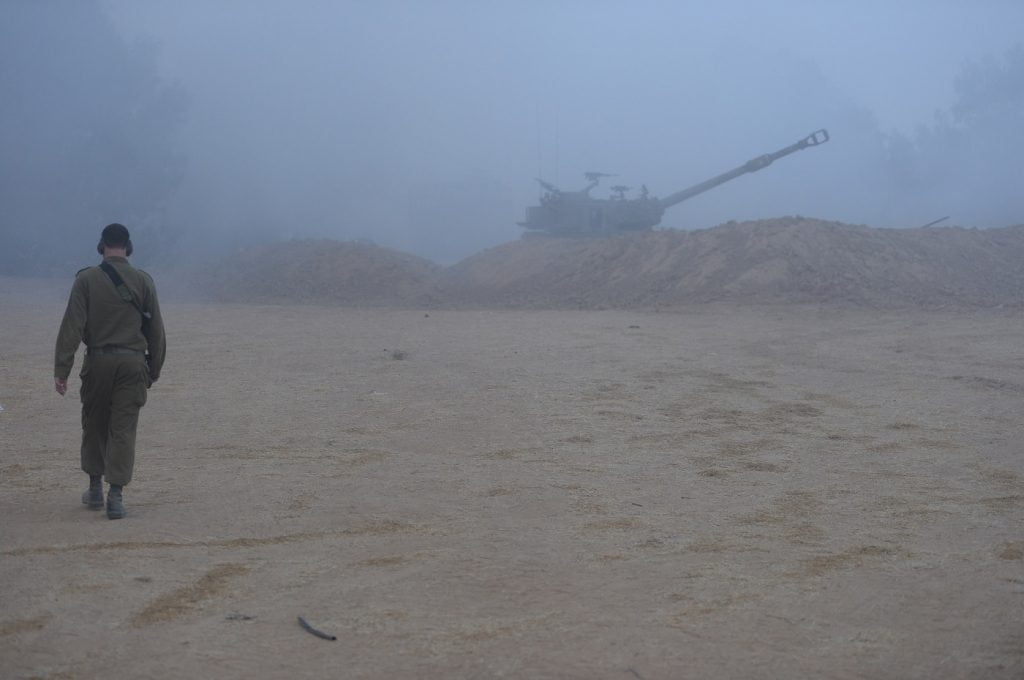Studies on post-traumatic stress disorder (PTSD), the mental health condition experienced by some following a traumatic event which can bring on flashbacks, nightmares, and severe anxiety, often focus on the effects of the condition, the development and testing of treatment, and any preventative factors. Few, if any, have studied the process of developing PTSD and its symptoms as they may be unfolding.
Israeli researchers say they have conducted the first study that looks at PTSD in real-time – in the context of war. It showed that those with a sensitive startle response to everyday situations, such as loud noises, were at higher risk of experiencing symptoms, like difficulty sleeping and concentrating over the next 12 hours.
The innovative research was conducted by the University of Haifa and NATAL, the Israel Trauma and Resiliency Center for victims of terror and war, and took place over the course of Operation Protective Edge, the seven-week conflict and military operation launched in and around the Gaza Strip in the summer of 2014 in the wake of daily rocket barrages by Palestinian groups.
The study, whose results were revealed earlier this year, began on the eighth day of the conflict and looked at 96 civilians living in areas where they had no more than 60 seconds to enter protected spaces following rocket alerts. The participants filled out daily surveys on their experiences.

Israeli soldiers work to disable a tunnel used by Palestinian terror group Hamas during the 2014 summer war. (IDF/Flickr)
“This is the first time that we have managed to monitor the process undergone by people in a trauma situation in real time and to identify one of the ‘engines’ that could ultimately drive whether someone develops PTSD or not,” Dr. Talya Greene of the University of Haifa’s Department of Community Mental Health said. Greene led the research, along with Prof. Marc Gelkopf, head of the Department of Community Mental Health at the University of Haifa and head of research at NATAL. Greene was also one of the authors of the study.
SEE ALSO: Researchers Shed Light On Depression By Curing Depressed, Stressed-Out Mice
In a phone interview with NoCamels, Greene says the study is one of a kind. “Nobody has ever done this, in an exposed situation. The early pattern of reaction to trauma is really important,” she says
Although several studies have examined the influence of warfare situations on the development of PTSD, most focus on the aftermath without observing what is happening during the actual events because it is more difficult to manage a study as events unfold, she emphasizes
“We didn’t know what will happen in terms of the war, we didn’t really know what to expect,” Greene says, explaining that the researchers were focused on having the respondents fill out the questionnaires and did not examine the answers until the study was complete.
Though most of the participants were civilians at the time of the study, a majority had close relatives serving in the IDF during the war, as Israel has compulsory military service and many serve in the reserves for years afterward. And some of the participants had previously served in conflict themselves.
“It’s not just the exposure [to stress] on a personal level but it is also on a national level”, Greene tells NoCamels. “Some of the participants were not just civilians, but also served in the army or already had a high exposure related to wars in the past. We had this pattern with the increasing of stress levels in national events when there were days where many soldiers were killed, the symptoms went up as well.”
The team of researchers, she says, was already interested in finding a new way of looking at PTSD before the war broke out, and seized the opportunity to conduct the research as the situation developed.
Sign up for our free weekly newsletter
Subscribe“There is something about how people react in the moment that continues to trigger them over time. How people react in the moment could be crucial in the long term. As a researcher, in the context of war, trauma, terror, these were already questions we were interested in,” she says.
Reactions during conflict
According to the researchers, the 96 participants in the study were all healthy, with no prior diagnosis of PTSD symptoms.
The participants were asked to fill out questionnaires containing 85 questions twice a day. This allowed researchers to monitor traumatic symptoms, the connection between the symptoms, and the impact of war-related events as the conflict dragged on from July to August. The respondents were assessed on their stress, emotions during stress, subjective sense of threat, and actual exposure. Examples of questions included: How many seconds did yu have to get into a shelter? Did you overreact? Did you find it har to concentrate afterward? Were you with people? Was there social support? Did you experience any hallucination or psychiatric symptoms?
The study found that the strongest predictor for the development of other PTSD symptoms within 12 hours was “startle reactivity,” according to the researchers. Participants who reported on a real-time basis that they had strong reactions to loud noises, such as doors suddenly opening or closing, were at the highest risk of triggering a series of symptoms, including hypervigilance, negative emotions, and sleeping difficulties over the next 12 hours.
Another symptom found to predict further negative reactions down the line was a reduced ability to feel emotions. Participants who reported feeling blunted emotions were at a higher risk for developing detachment, anger, and sleeping problems after 12 hours. The study found that those who experienced negative emotions on a real-time basis also developed feelings of guilt after 12 hours.
But not all responses were completely negative. A noticeable observation made by the researchers was that the participants who contributed to the study felt more reassured by the process of self-reporting their experiences.
“I think it is very possible that there is something about this process that people felt was therapeutic,” Greene suggests. She believes that this kind of self-reporting could become part of future treatment for people suffering from trauma, perhaps allowing for early intervention.
SEE ALSO: Study To Tell Susceptibility To Post-Traumatic Stress
The findings could help mental health professions develop additional tools for civilians experiencing negative symptoms or emotions during traumatic experiences, the researchers say. “Our unique study and the large quantity of real-time data [gathered] can help us develop a deeper understanding of the process itself. This may eventually help in the treatment of PTSD,” Greene says.
As an example, Greene cited the use of cell phones which can help track symptoms and reactions more closely. The use of smartphones could give the possibility of real-time monitoring and assessment which would enable real-time intervention and treatment, says Greene.
Related posts

Israeli Medical Technologies That Could Change The World

Harnessing Our Own Bodies For Side Effect-Free Weight Loss

Missing Protein Could Unlock Treatment For Aggressive Lung Cancer





Facebook comments